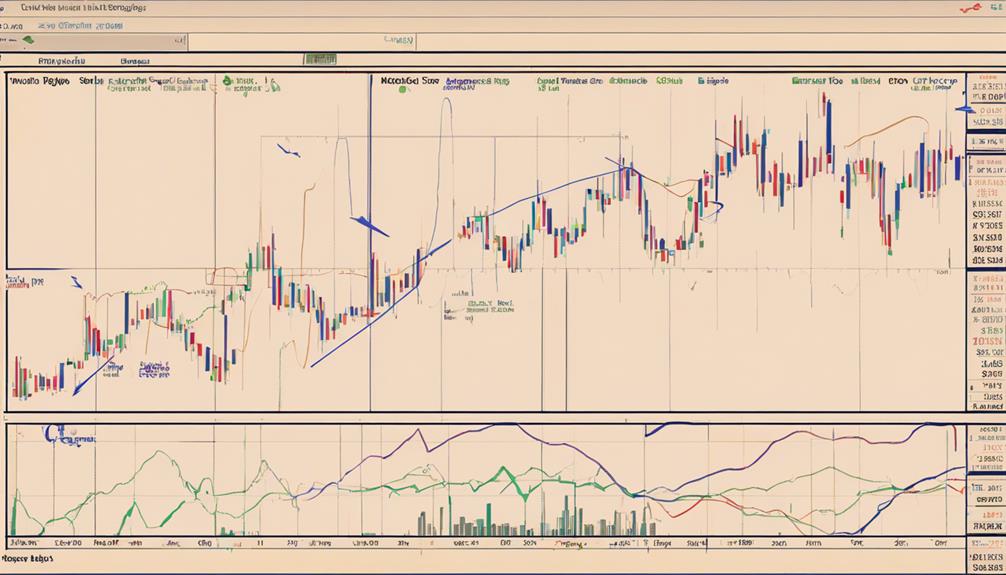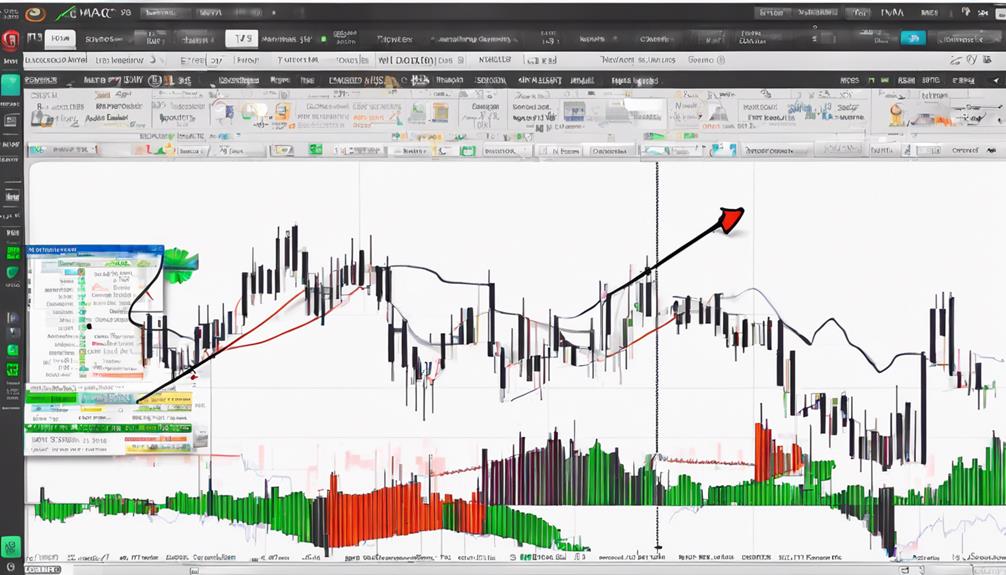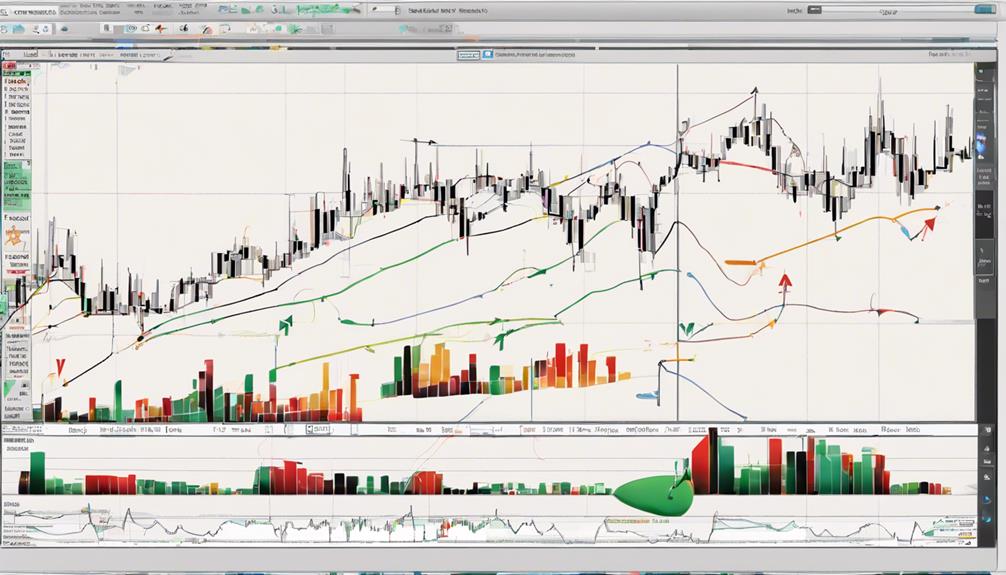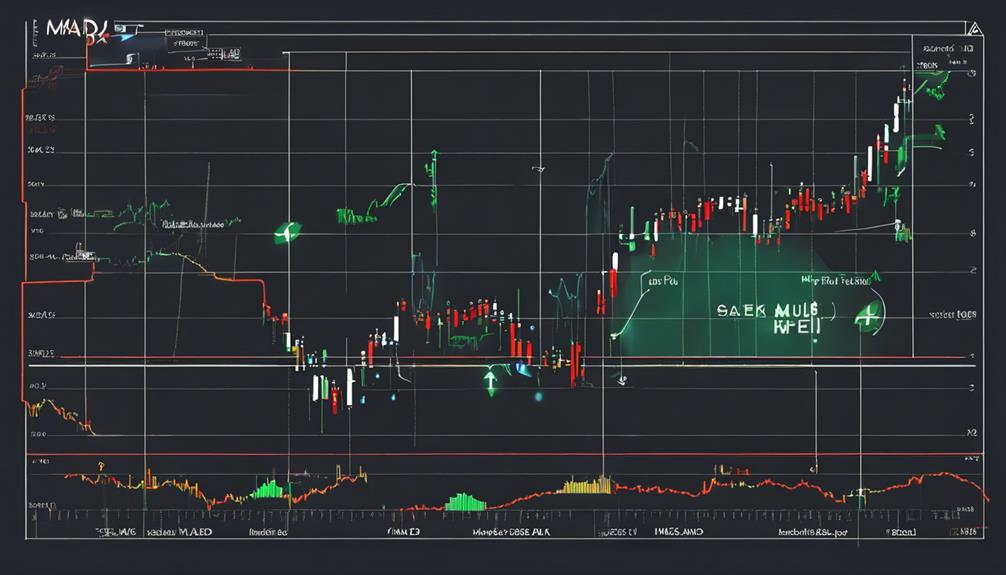You might question the necessity of adding another indicator to your technical analysis toolkit, but consider this: the MACD indicator offers unique insights into market momentum and potential price movements that can enhance your trading decisions.
Understanding how the MACD works and its significance in analyzing stock price movements can give you a competitive edge in navigating unpredictable markets.
As you explore the intricacies of the MACD indicator, you'll uncover its power in uncovering hidden market trends and maximizing your trading profits.
Importance of MACD in Technical Analysis
In technical analysis, the MACD indicator holds significant importance as it serves as a key tool for identifying momentum changes in stock prices. Traders rely on the MACD, which stands for Moving Average Convergence Divergence, to gauge potential shifts in market direction effectively.
This indicator utilizes exponential moving averages (EMAs) to generate signals based on crossovers and divergences. A bullish signal occurs when the MACD line crosses above the signal line, indicating upward momentum and potential buying opportunities. Conversely, a bearish signal is triggered when the MACD line crosses below the signal line, suggesting a possible downturn in prices and prompting traders to consider selling positions.
Understanding these signals is crucial for informed decision-making in the dynamic world of trading.
Advantages of Using MACD Indicator

Utilizing the MACD indicator in technical analysis offers you a strategic advantage in identifying market momentum shifts and potential trend reversals. Here are the advantages of using the MACD Indicator:
- Clear Buy and Sell Signals: The MACD line crosses above or below the signal line, indicating potential buying or selling opportunities.
- Divergence from Price: Divergence between the MACD line and stock price can signal a potential trend reversal.
- Momentum Oscillator: It acts as a momentum oscillator, helping you determine whether the market is in a bullish or bearish phase.
- MACD Histogram: The histogram helps in identifying overbought or oversold conditions, providing insights into possible market turning points.
Practical Applications of MACD

Transitioning from understanding the advantages of using the MACD indicator, let's now explore its practical applications in real market scenarios.
The MACD, consisting of two lines based on exponential moving averages (EMAs), plays a crucial role in technical analysis. Traders often look for MACD crossovers, where the MACD line crosses the signal line, as signals to buy or sell. Additionally, interpreting MACD divergences and analyzing price action alongside MACD movements aids in decision-making.
It's important to note that the timing of signals on the MACD histogram may differ from the MACD lines. To enhance the reliability of MACD signals, traders often seek confirmation from other technical indicators like the Relative Strength Index (RSI).
MACD's Role in Decision Making

Analyzing MACD's key lines provides valuable insights for traders when making crucial buy or sell decisions in the stock market. This is because:
- The MACD indicator is calculated by subtracting the 26-period exponential moving average (EMA) from the 12-period EMA, creating the MACD line.
- The signal line, a 9-period EMA of the MACD line, helps identify potential trend changes.
- When the MACD turns above the signal line, it may signal a buy opportunity.
- Conversely, when the MACD turns below the signal line, it could indicate a sell opportunity.
These interactions between the MACD line and the signal line enable traders to interpret market data effectively and make informed trading decisions.
Maximizing Profits With MACD

To maximize profits with the MACD indicator, traders must adeptly interpret crossovers and divergences for strategic entry and exit points in trading. By closely monitoring MACD crosses, including the bullish crossover indicating a potential uptrend and the bearish MACD signaling a possible downtrend, traders can identify optimal entry and exit signals.
Understanding how MACD interacts with the exponential moving average (EMA) and incorporating other technical indicators like the relative strength index (RSI) can further enhance profit potential. Analyzing MACD turning points on stock charts is crucial for capturing price trends effectively and making informed trading decisions.
What Makes the MACD Indicator Essential in Technical Analysis?
The MACD indicator for market analysis is essential in technical analysis because it helps traders identify potential changes in the price movements of a security. By measuring the relationship between two moving averages, the MACD indicator provides valuable insights into trend strength and potential reversal points, making it a crucial tool for informed decision-making.
Frequently Asked Questions
What Is the Importance of MACD in Technical Analysis?
In technical analysis, the MACD indicator holds significance for identifying momentum shifts and trend reversals. It helps you spot overbought/oversold conditions and generates buy/sell signals based on EMA crossovers. The MACD histogram visualizes bullish or bearish momentum for informed trading decisions.
What Does the MACD Indicator Tell You?
The MACD indicator tells you about changes in momentum and trend direction in a stock's price movement. It consists of two lines, the MACD line and the signal line, offering buy and sell signals through their crossovers.
What Is the Logic Behind the MACD Indicator?
To understand the logic behind the MACD indicator, focus on its ability to capture momentum shifts by comparing short-term and long-term moving averages. The MACD line crossing the signal line indicates buy or sell signals, guiding trading decisions.
Which Indicator Is Better MACD or Rsi?
When comparing MACD and RSI, consider their unique strengths. MACD tracks trend changes and strength, while RSI gauges market momentum. Combining both provides a thorough analysis. Conflicting signals between them can hint at potential market shifts.
Conclusion
In conclusion, the MACD indicator is a vital tool in technical analysis, providing valuable insights into market trends and potential price reversals. By utilizing the MACD histogram and signal line, traders can make informed buy or sell decisions to maximize profits.
Its calculation and interpretation help gauge the strength and direction of stock price movements, making it essential for analyzing market trends and making strategic trading decisions. Stay ahead of the game by incorporating the MACD indicator into your trading strategy.
